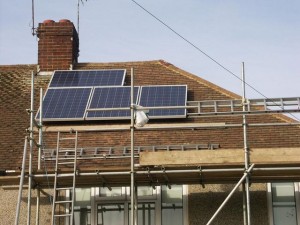 The world economy is moving in a low-carbon direction, drawing investors to carbon-intensive sectors. This is attributed to innovations that lower the price of renewable energy much faster than anticipated. The cost of solar panels for example has had an 80% decrease since 2008, and solar and wind energy can now compete on cost with fossil fuels in many regions worldwide. This has translated to a drastic market shift with new clean power capacity exceeding that of new fossil fuel capacity, and this is expected to continue in coming years. According to research from Corporate Knights, 14 funds holding more than $1 trillion in assets could have saved $22 billion had they shifted investments from the highest carbon companies to those that receive at least 20 percent of revenues from environmental markets or clean energy.
The world economy is moving in a low-carbon direction, drawing investors to carbon-intensive sectors. This is attributed to innovations that lower the price of renewable energy much faster than anticipated. The cost of solar panels for example has had an 80% decrease since 2008, and solar and wind energy can now compete on cost with fossil fuels in many regions worldwide. This has translated to a drastic market shift with new clean power capacity exceeding that of new fossil fuel capacity, and this is expected to continue in coming years. According to research from Corporate Knights, 14 funds holding more than $1 trillion in assets could have saved $22 billion had they shifted investments from the highest carbon companies to those that receive at least 20 percent of revenues from environmental markets or clean energy.
Its therefore time for companies and investors to make 2016 a ‘year of green finance’ by putting efforts to reduce emissions on their priority list for investment and risk management. Green banks are already successfully leveraging private capital in a number of countries and proving that such investments can be profitable. For instance, the UK Green Investment Bank expected to earn taxpayers a return of 10 percent in 2015, while China and Brazil provided low cost and long-term debt for renewable energy. However, much work still lies ahead and public capital must play a key role. without financing, the upfront costs of clean energy can deter investors and obscure the future cost advantages from lower fuel and operating costs.
Click here for the full article




